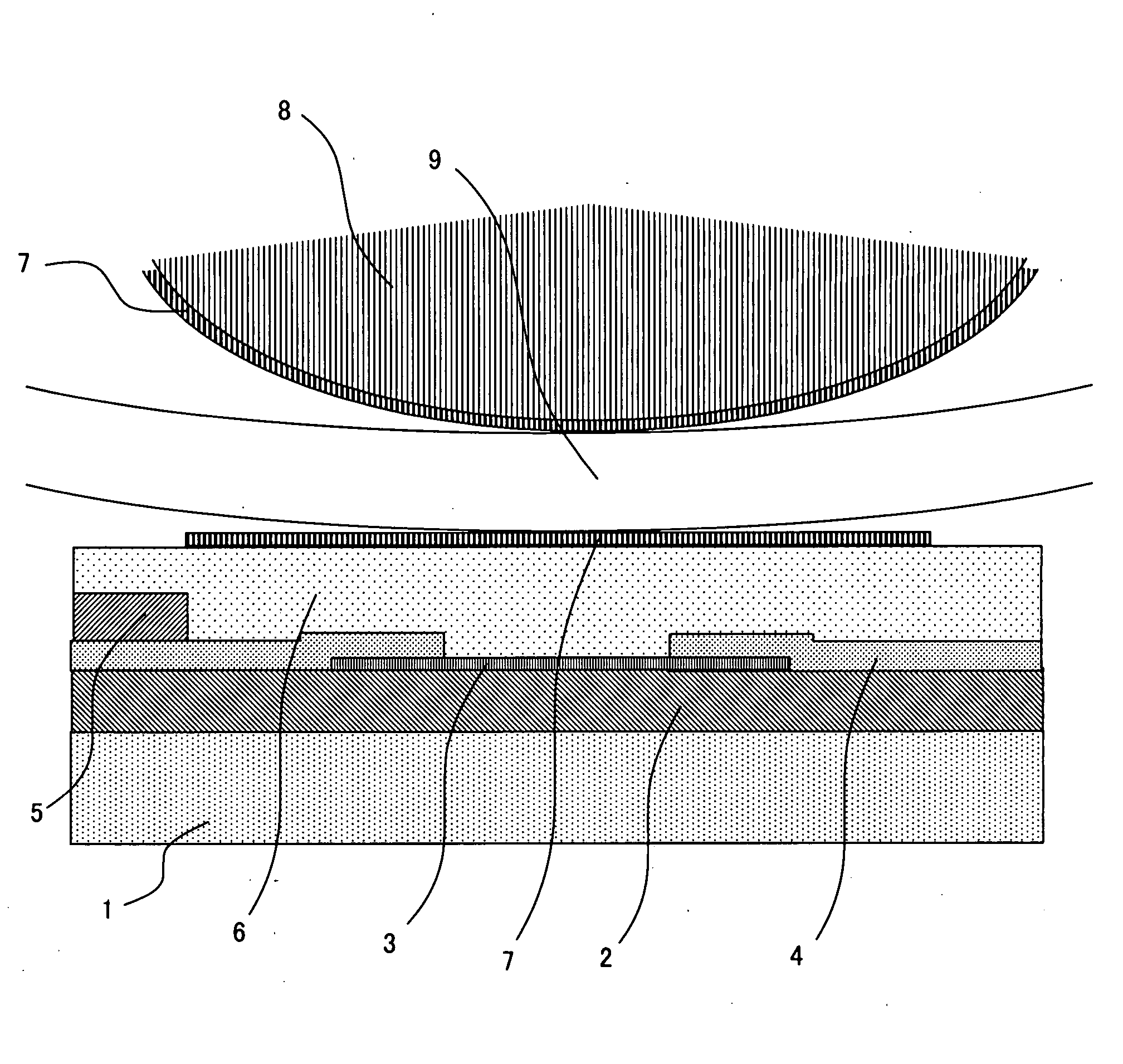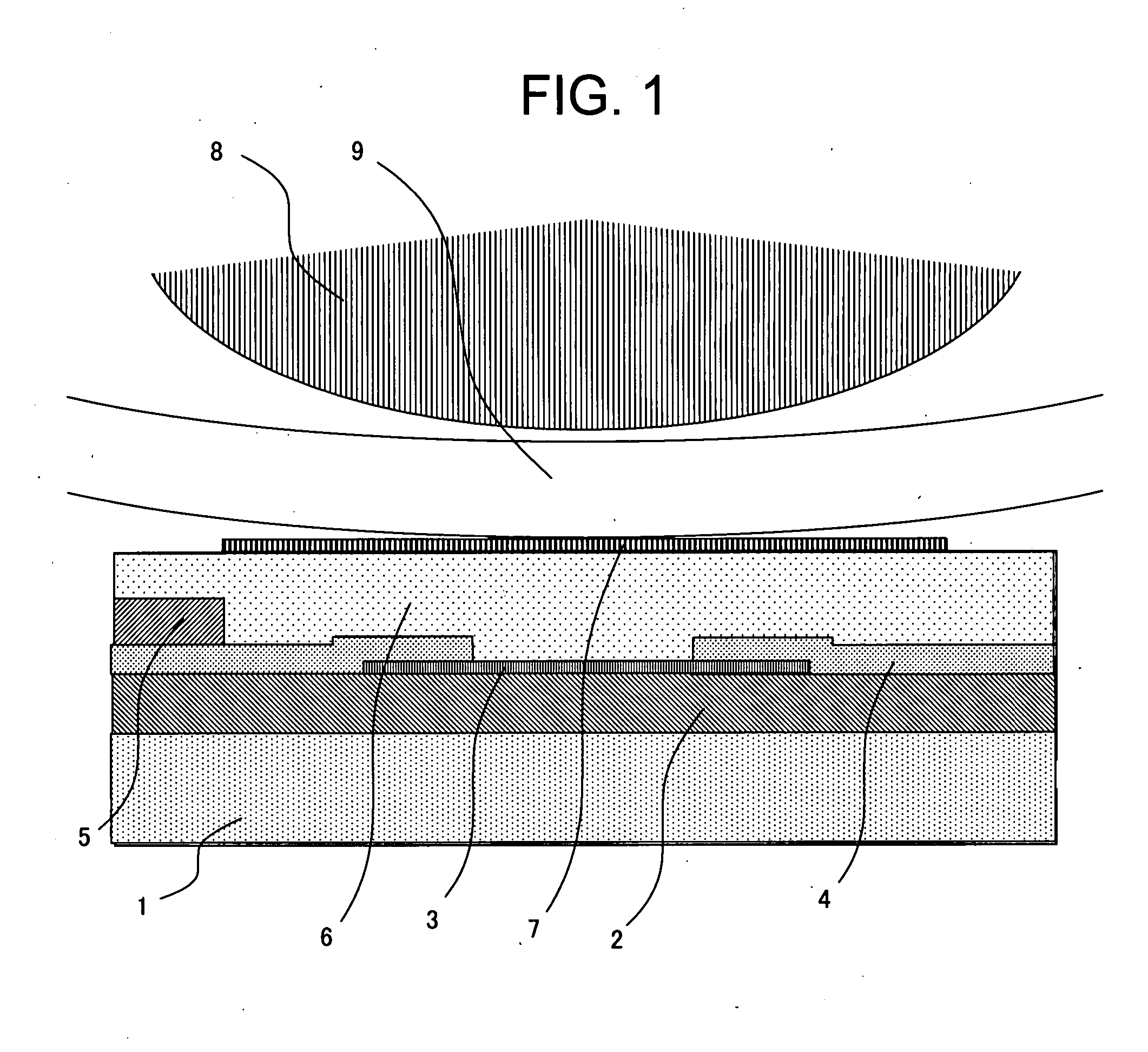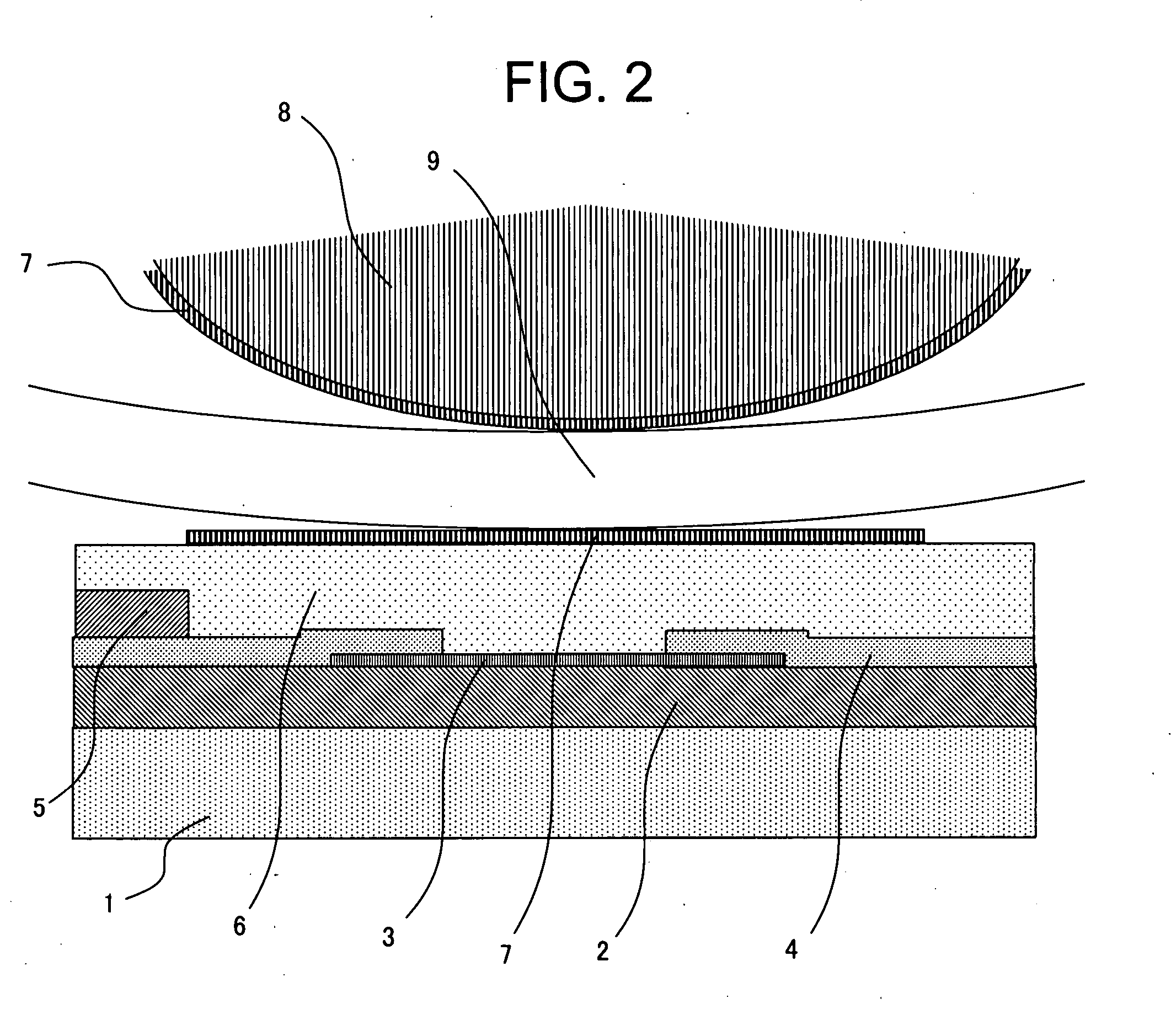Thermal head and thermal printer using the same
- Summary
- Abstract
- Description
- Claims
- Application Information
AI Technical Summary
Benefits of technology
Problems solved by technology
Method used
Image
Examples
Embodiment Construction
[0021] Hereinafter, the present invention will be described in detail with reference to the drawings. FIG. 1 is a sectional view of a thermal head and a platen roller of a thermal printer according to an embodiment of the present invention. FIG. 2 is a sectional view of a thermal head and a platen roller of a thermal printer according to another embodiment of the present invention.
[0022] A substrate 1 is an insulating substrate such as an alumina ceramics substrate typically used for the thermal head. In a case where the alumina ceramics substrate is used, on the substrate 1, there is formed a heat storage layer 2 of glass or the like for making calorie of a heat generating resistance layer 3, which has generated heat, be difficult to be discharged to the substrate.
[0023] Hereinafter, a thermal head formed by a thin film process will be used as an example for describing the present invention in detail. On the heat storage layer 2, by a thin film forming methods such as sputtering,...
PUM
 Login to View More
Login to View More Abstract
Description
Claims
Application Information
 Login to View More
Login to View More - R&D
- Intellectual Property
- Life Sciences
- Materials
- Tech Scout
- Unparalleled Data Quality
- Higher Quality Content
- 60% Fewer Hallucinations
Browse by: Latest US Patents, China's latest patents, Technical Efficacy Thesaurus, Application Domain, Technology Topic, Popular Technical Reports.
© 2025 PatSnap. All rights reserved.Legal|Privacy policy|Modern Slavery Act Transparency Statement|Sitemap|About US| Contact US: help@patsnap.com



